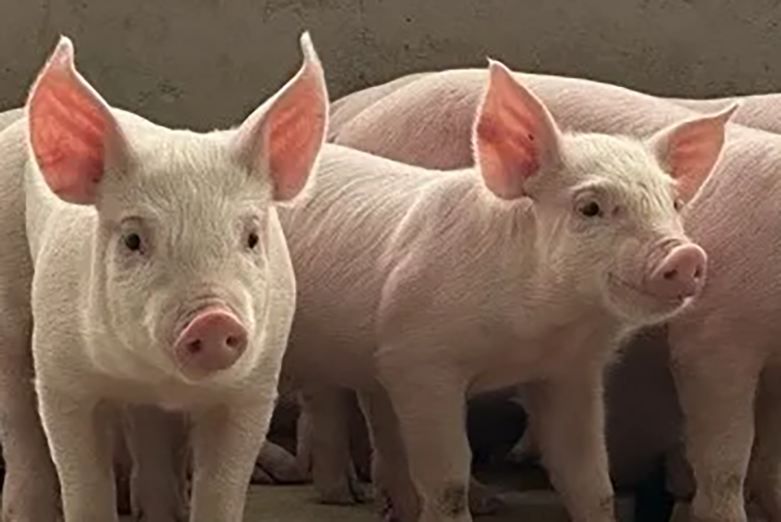A meta-analysis was conducted to determine grain particle size (PS) effects on pig growth performance and stomach morphology.
Data from 29 trials (11 in the nursery and 18 in the finisher) published from 1986 to 2016 for a total of 140 observations were recorded in a database.
The response variables were average daily gain (ADG), average daily feed intake (ADFI), gain-to-feed ratio (G:F), ulceration and keratinization scores. Tested predictors included the interactions between PS linear and quadratic effects, production phase, diet form, and main effects of grain type, ingredient inclusion, and mill type. Trial was included as a random effect.
Data were analysed with the lmer function from the lme4 package in R. Significant predictors (P < 0.05) and with improved model fit remained in the final model.
Results indicated a significant interaction (P < 0.05) between diet form and quadratic PS for ADFI and G:F. Nursery and finishing pigs fed meal diets linearly reduced ADFI and improved G:F as PS reduced. Nursery pigs fed pelleted diets had reduced ADFI and improved G:F with PS reduced to 500–600µ, with increased ADFI and poorer G:F at lower PS.
Finishing pigs fed pelleted diets had reduced ADFI and improved G:F with PS reduced to 500–600µ, with no further changes at lower PS.
Regardless of diet form and production phase, ADG increased (quadratic, P < 0.05) as PS reduced until approximately 600µ and decreased at lower PS. There was no evidence of PS effect on ulceration score (P = 0.12). Keratinization score increased (P < 0.05) as PS decreased. Reducing PS in meal diets linearly increased keratinization scores, reduced ADFI, and improved G:F. However, no further benefits in performance were observed at grain PS below 500–600µ in pelleted diets.
Source: Carlos J Kippert, Carine M Vier, Ning Lu, Wayne R Cast, Ron A Na- vales, Steve S Dritz, Uislei A Orlando. Journal of Animal Scien- ce, Volume 99, Issue Supplement_1, May 2021, Pages 74-75. (https://doi.org/10.1093/jas/skab054.122)
PIC Comments
Jordi Camp Montoro, PhD, PIC Europe Nutrition Manager
One of the main objectives in the pig industry is to maximise the productive performance of pigs at minimum cost. Bearing in mind that feed cost represents around 70% of total costs, different techniques have been developed in feed manufacturing over the years with the aim of maximising the utilisation of nutrients from raw materials and reducing the impact of feed cost. Techniques such as particle size reduction and pelleting allow the nutritional value of feed to be improved by obtaining higher nutrient digestibility.
The aim of this study was to conduct a meta-analysis to determine the effect of grain particle size on pig production performance (ADG, ADFI and G:F) and how it affects keratinisation and stomach ulceration. The meta-analysis included 29 trials covering the transition and grow-fattening phases. ADG improved when particle size was reduced to 600 µ in the transition and grower-fattening phase and irrespective of whether the feed was pelleted or meal. The G:F improved linearly when grain particle size was reduced in meal feed, while the best G:F in pellet feed was observed between 500-600 µ particle size in both production phases. Several studies have shown that a 100 µ particle size reduction leads to a 1 % improvement in G:F. Economically, the cost of reducing the particle size by 100 µ is considerably lower (< 0.1 €/t) than increasing the fat in the feed by 0.5 % to improve the G:F by 1 % (5-10 €/t). These aspects are important and should be taken into account when assessing how to improve the G:F. However, reducing particle size can increase the incidence of keratinisation in the stomach and result in the development of gastric ulcers, e.g. in cases where feed intake is interrupted.
This article was originally published in the Spanish magazine SUIS magazine (September 2023)




